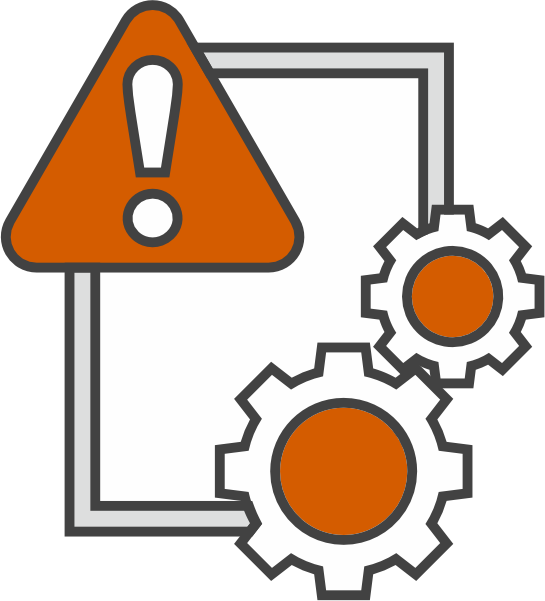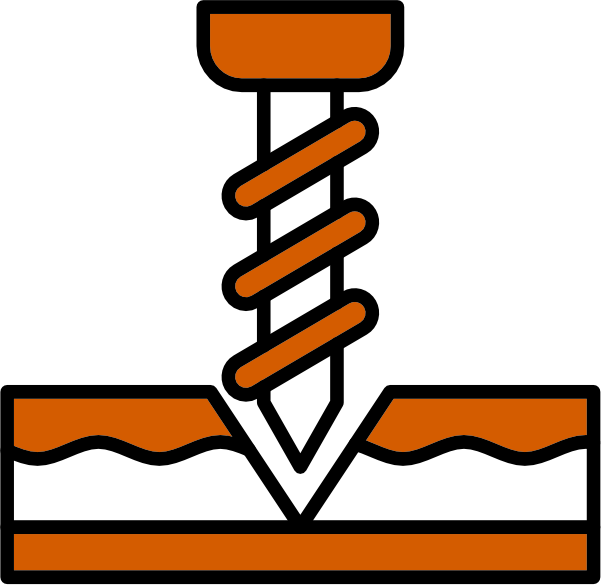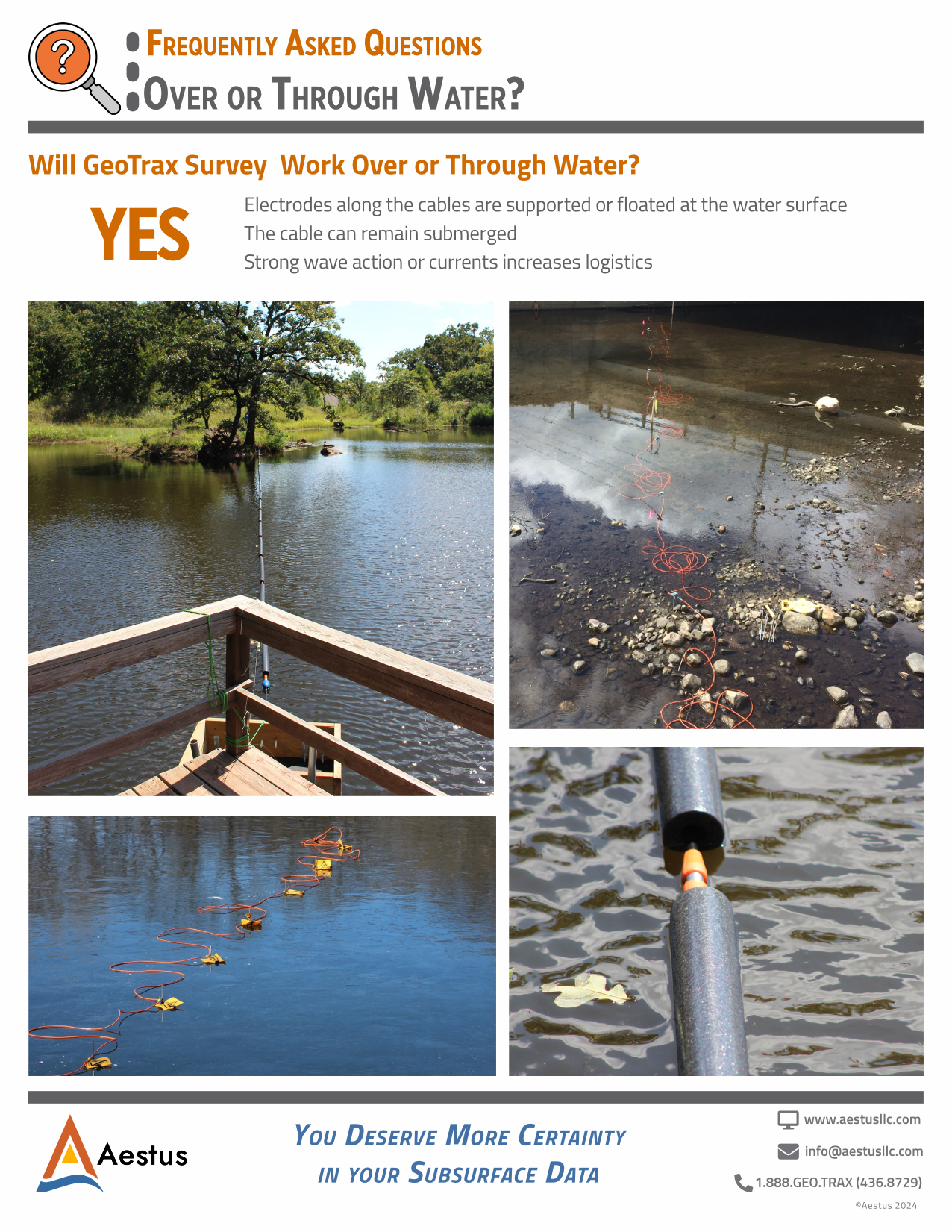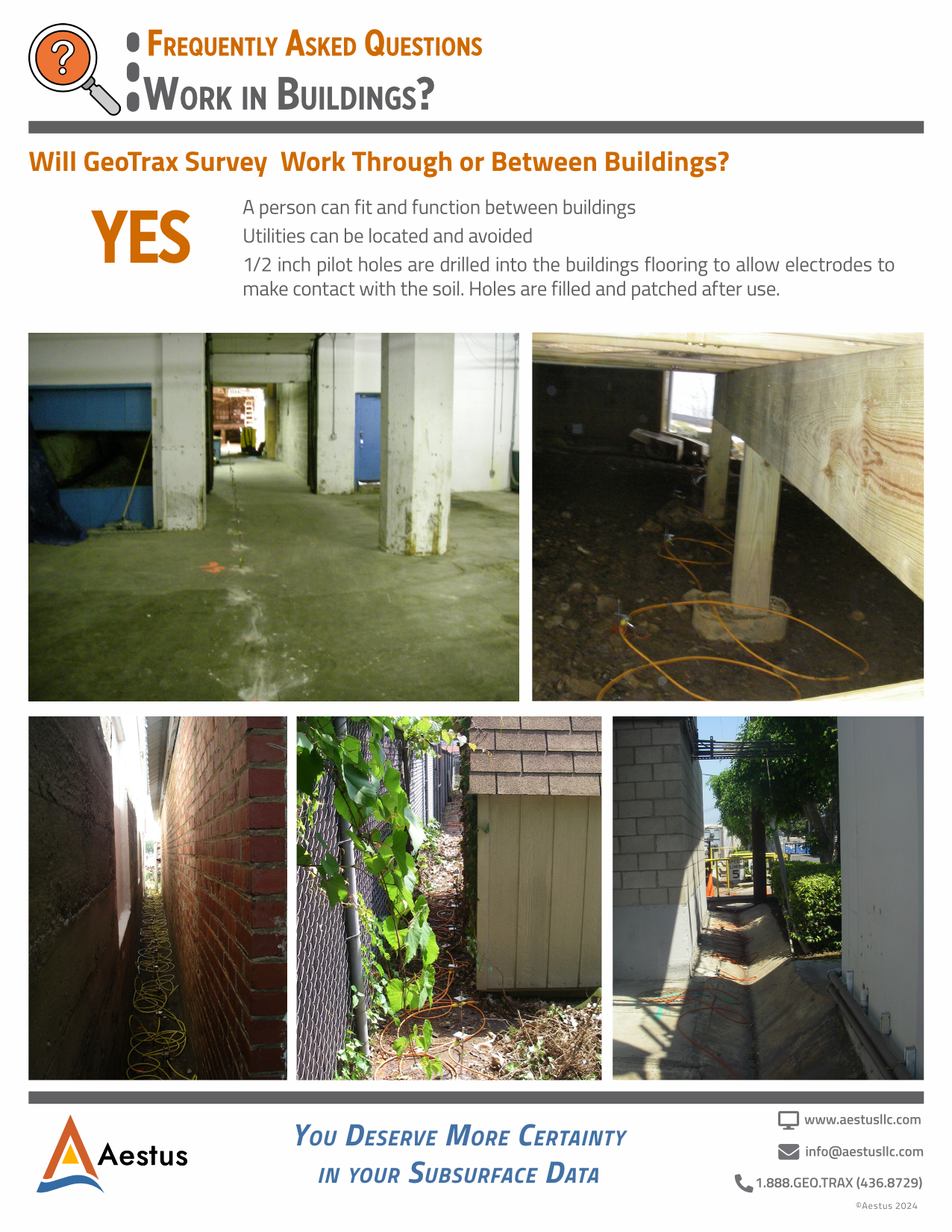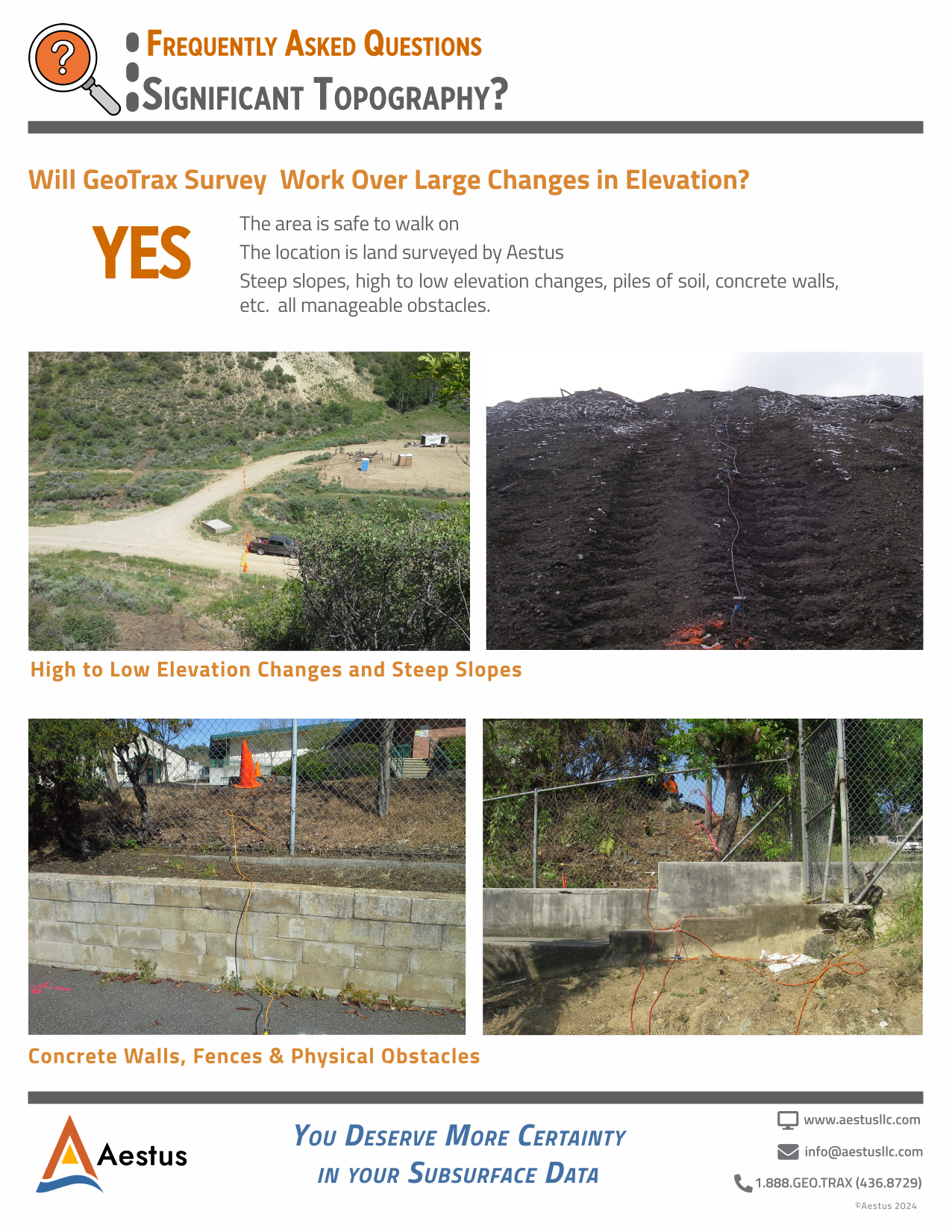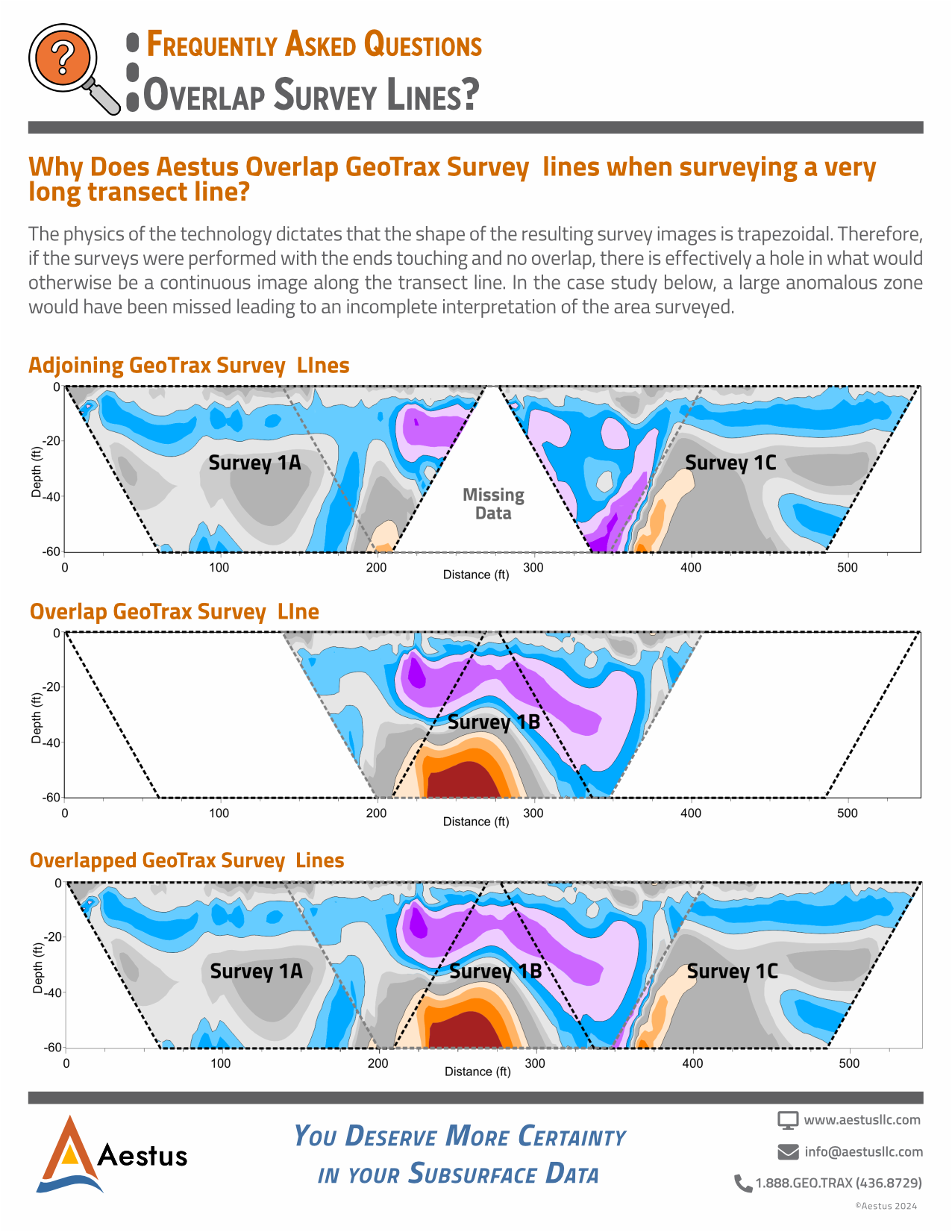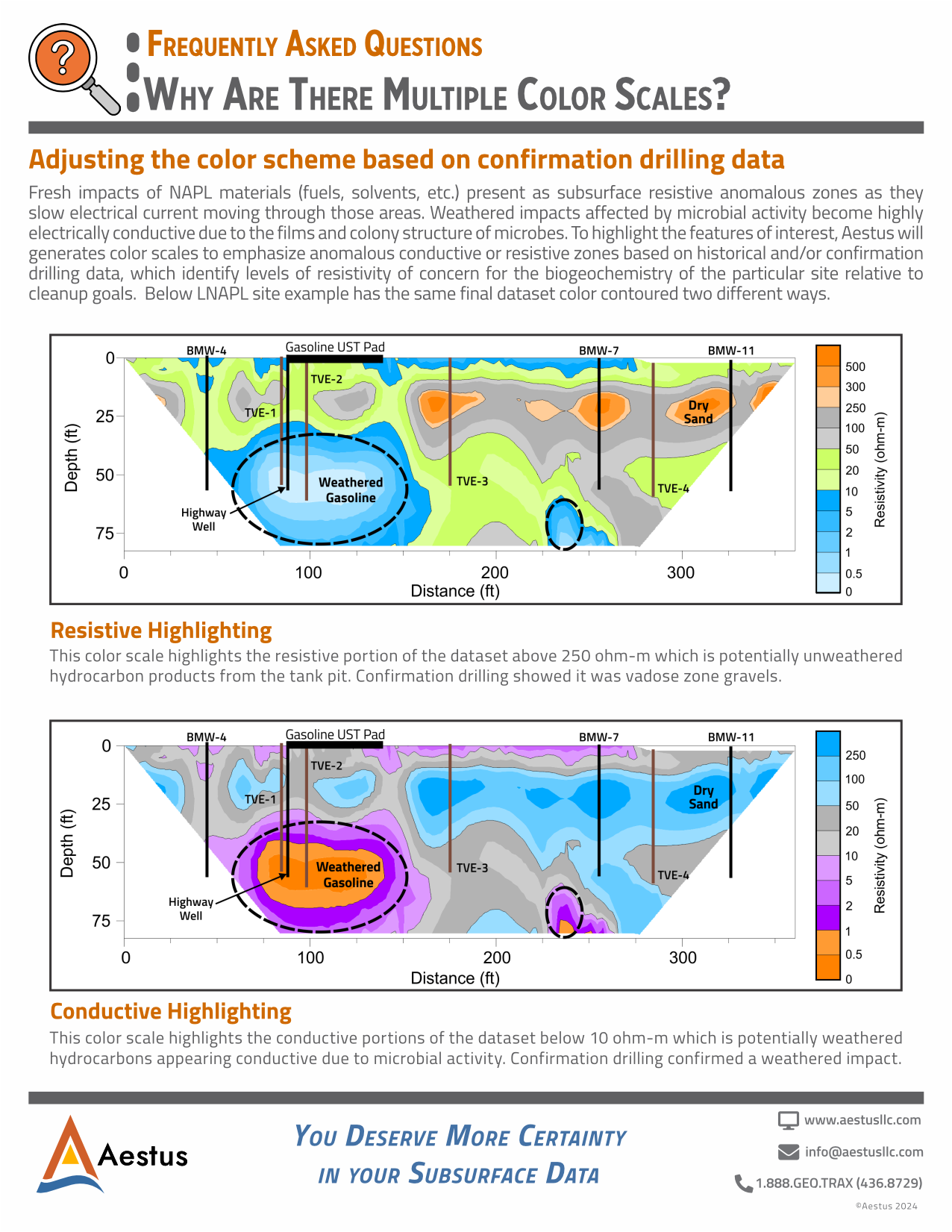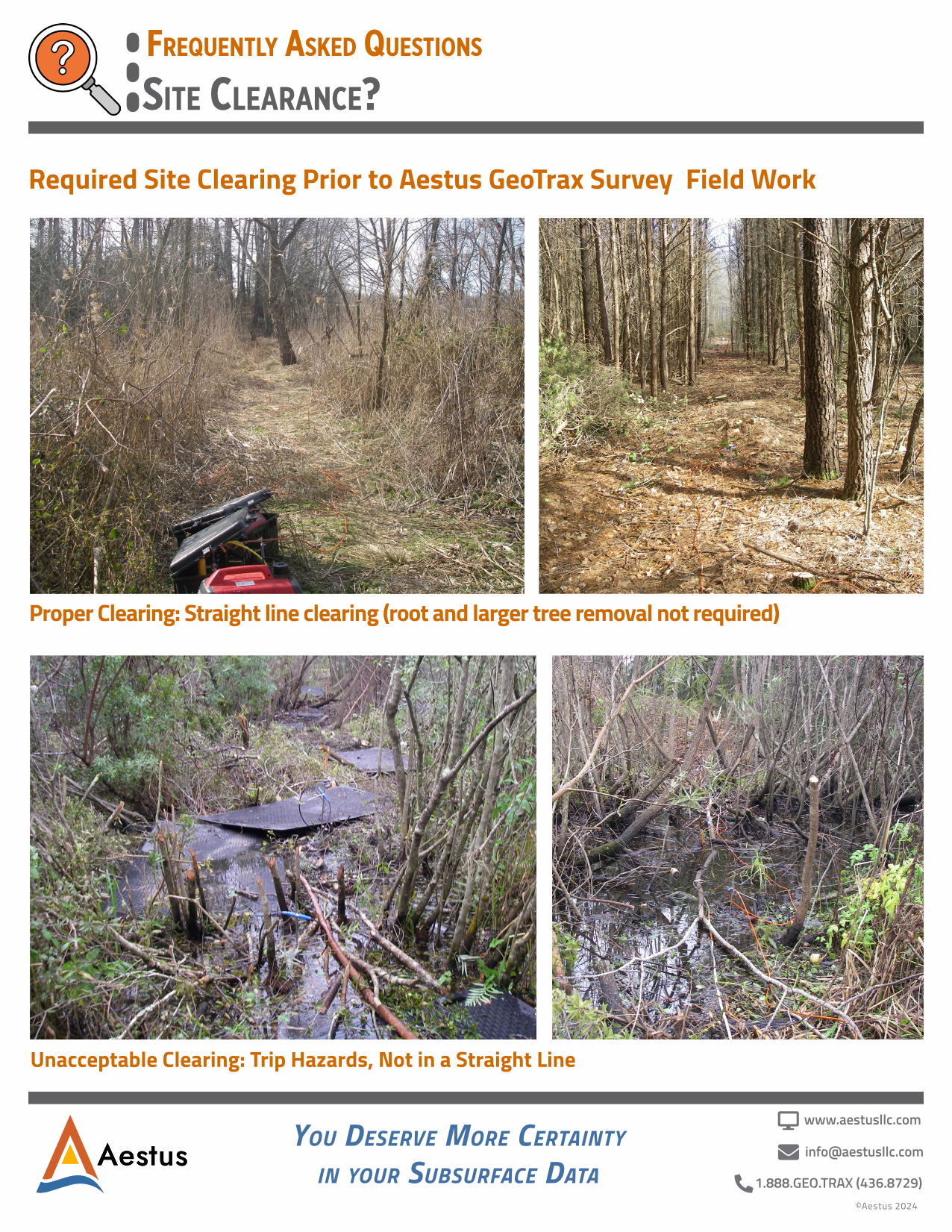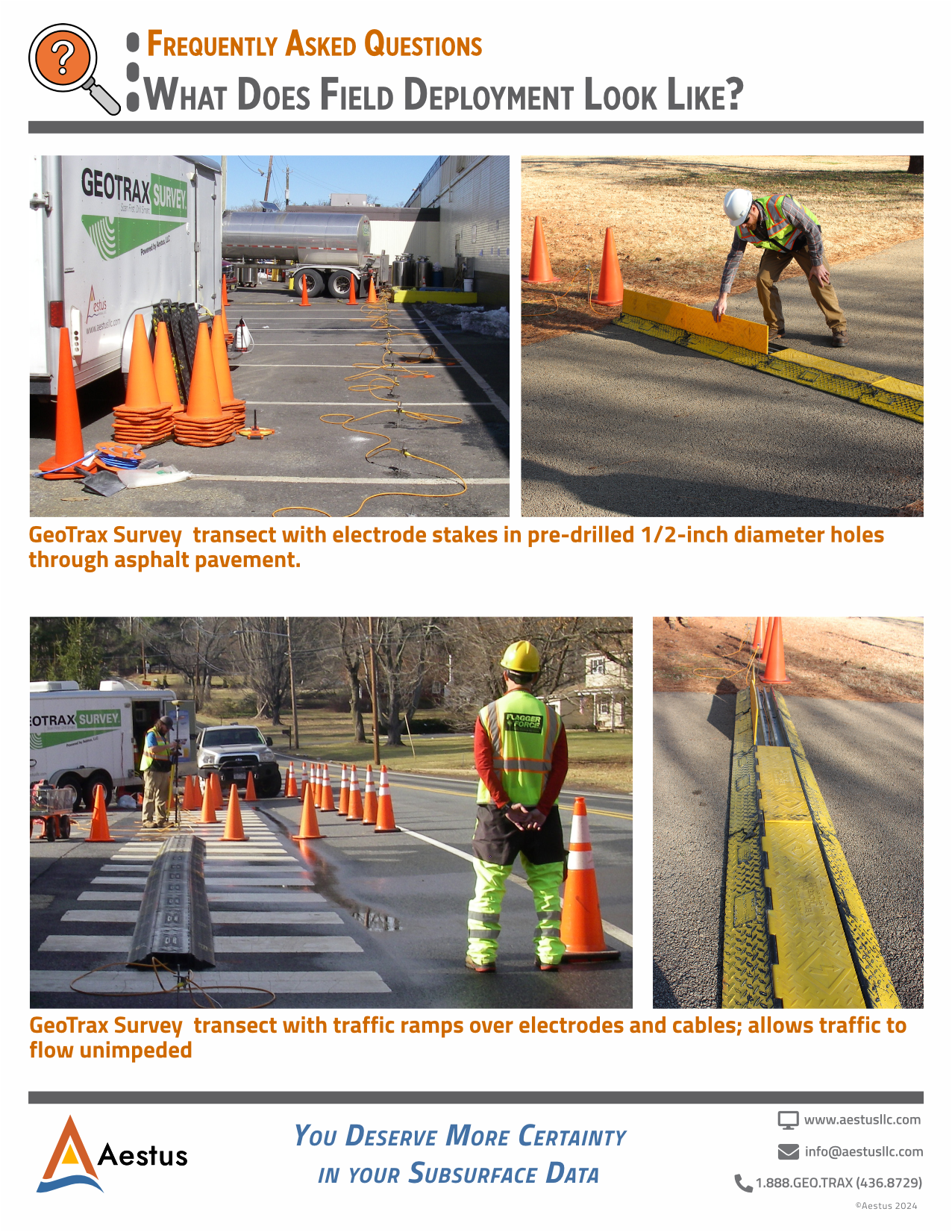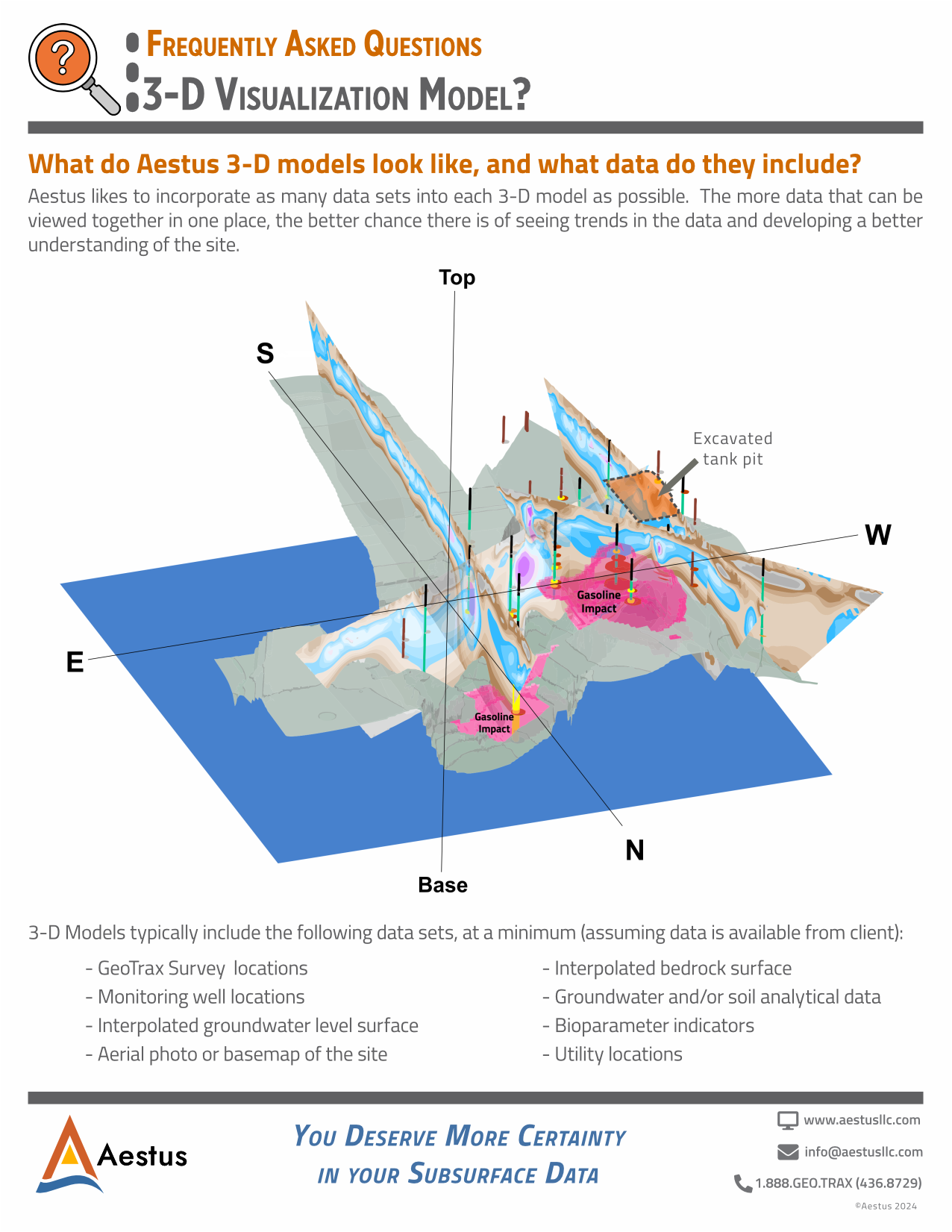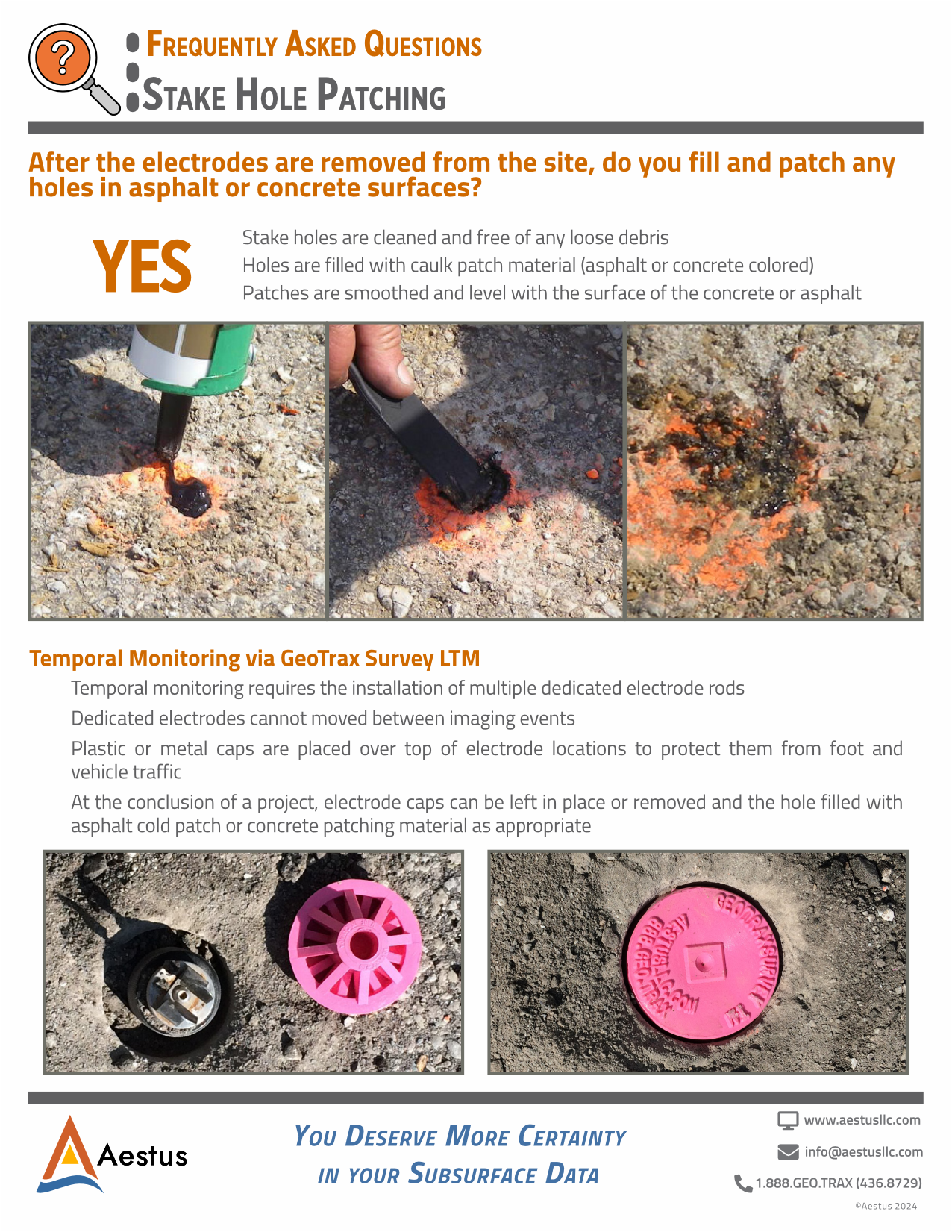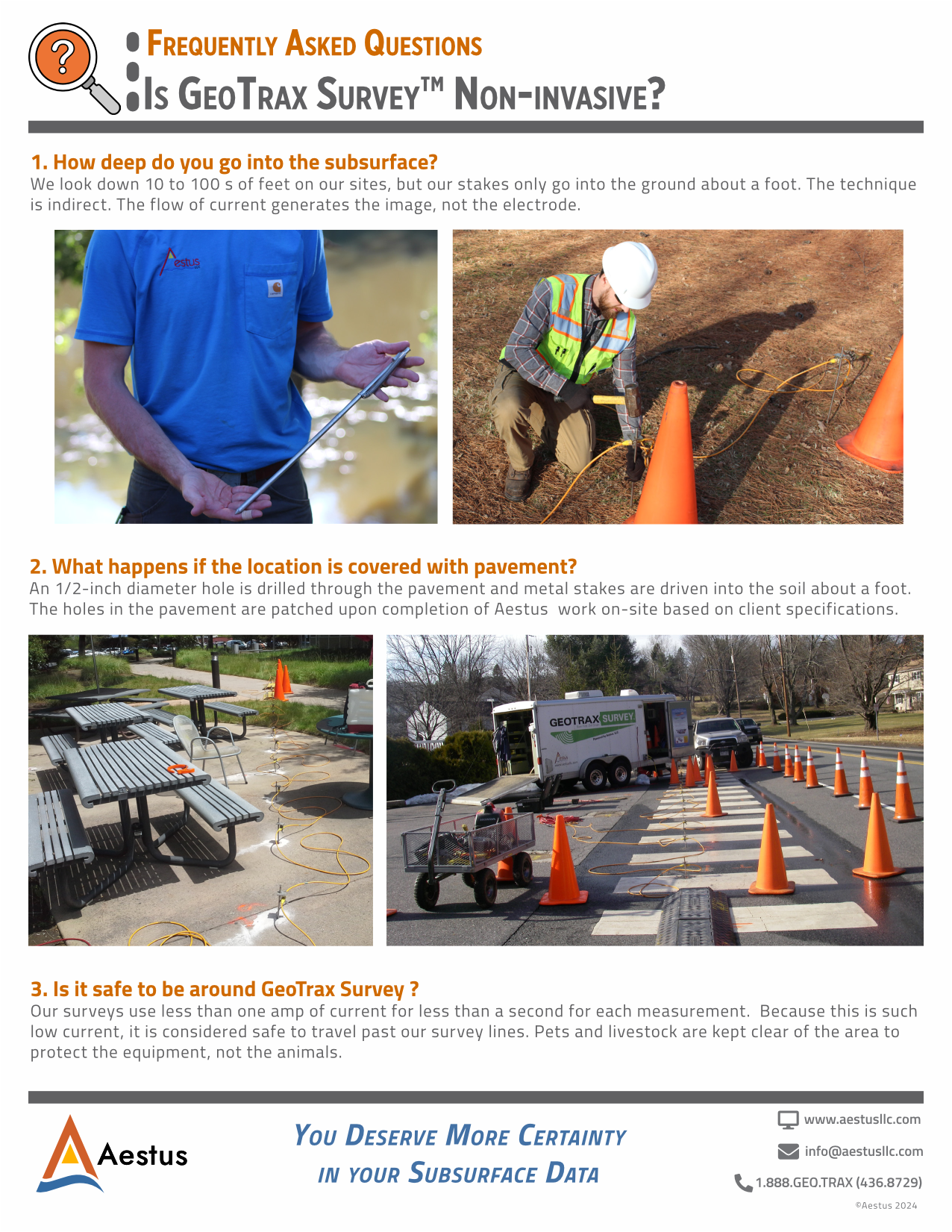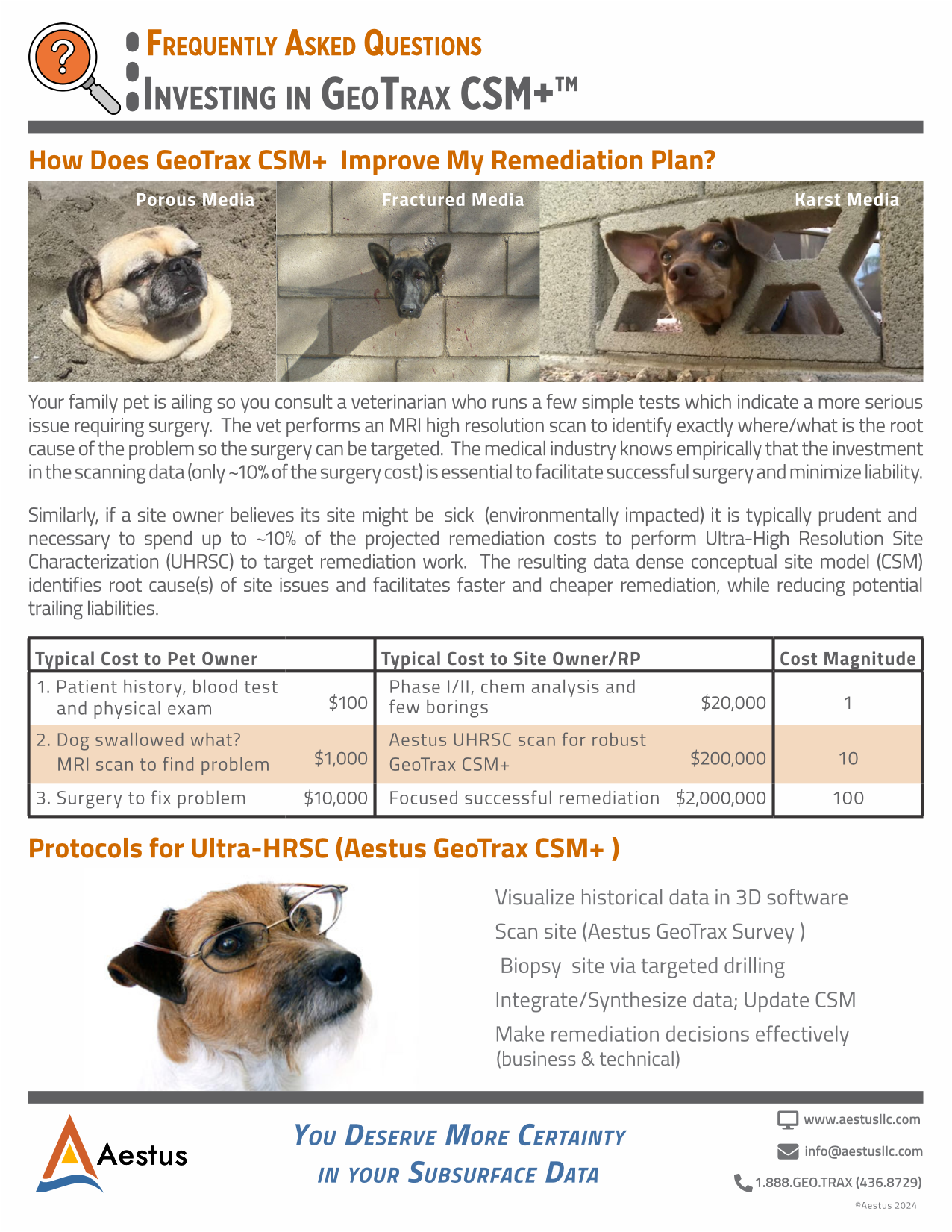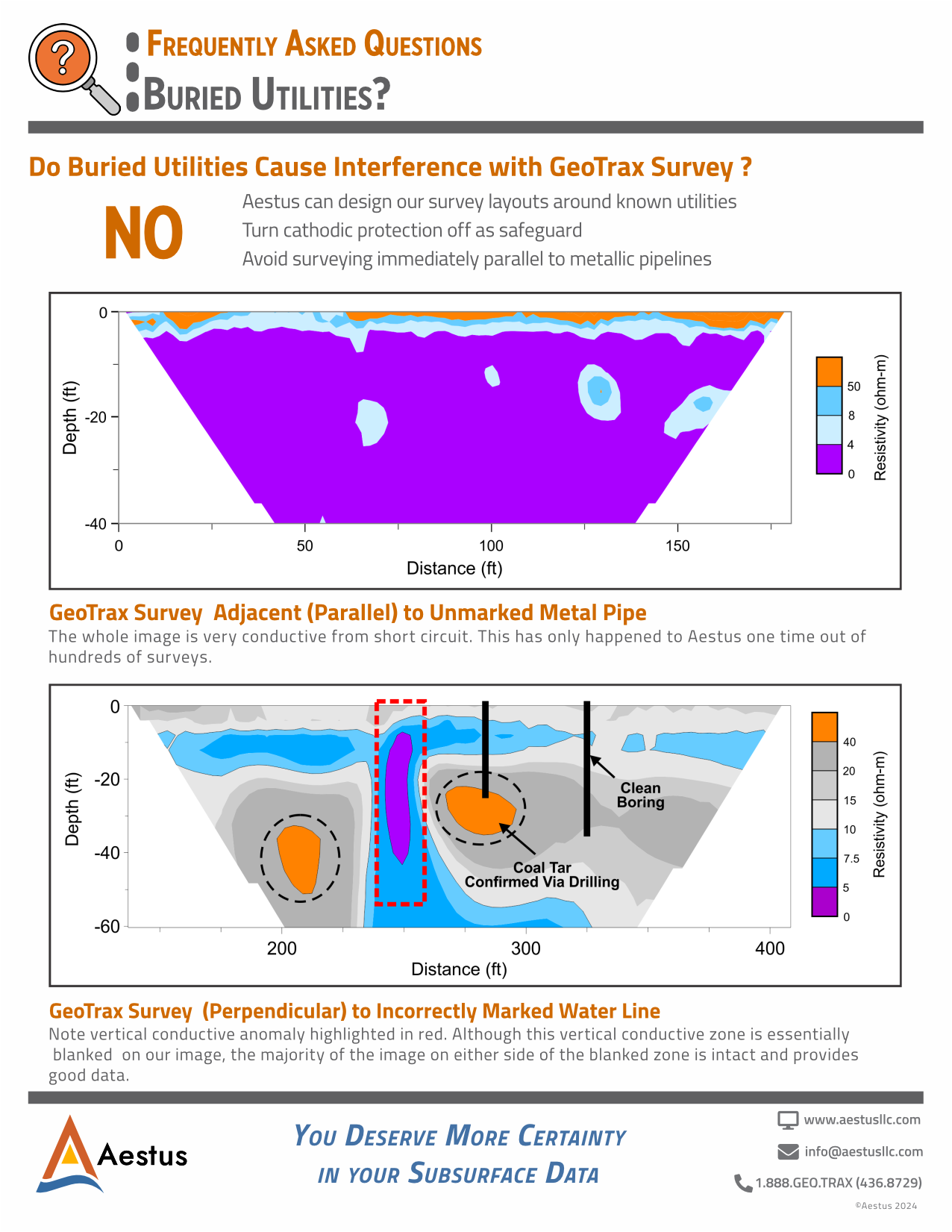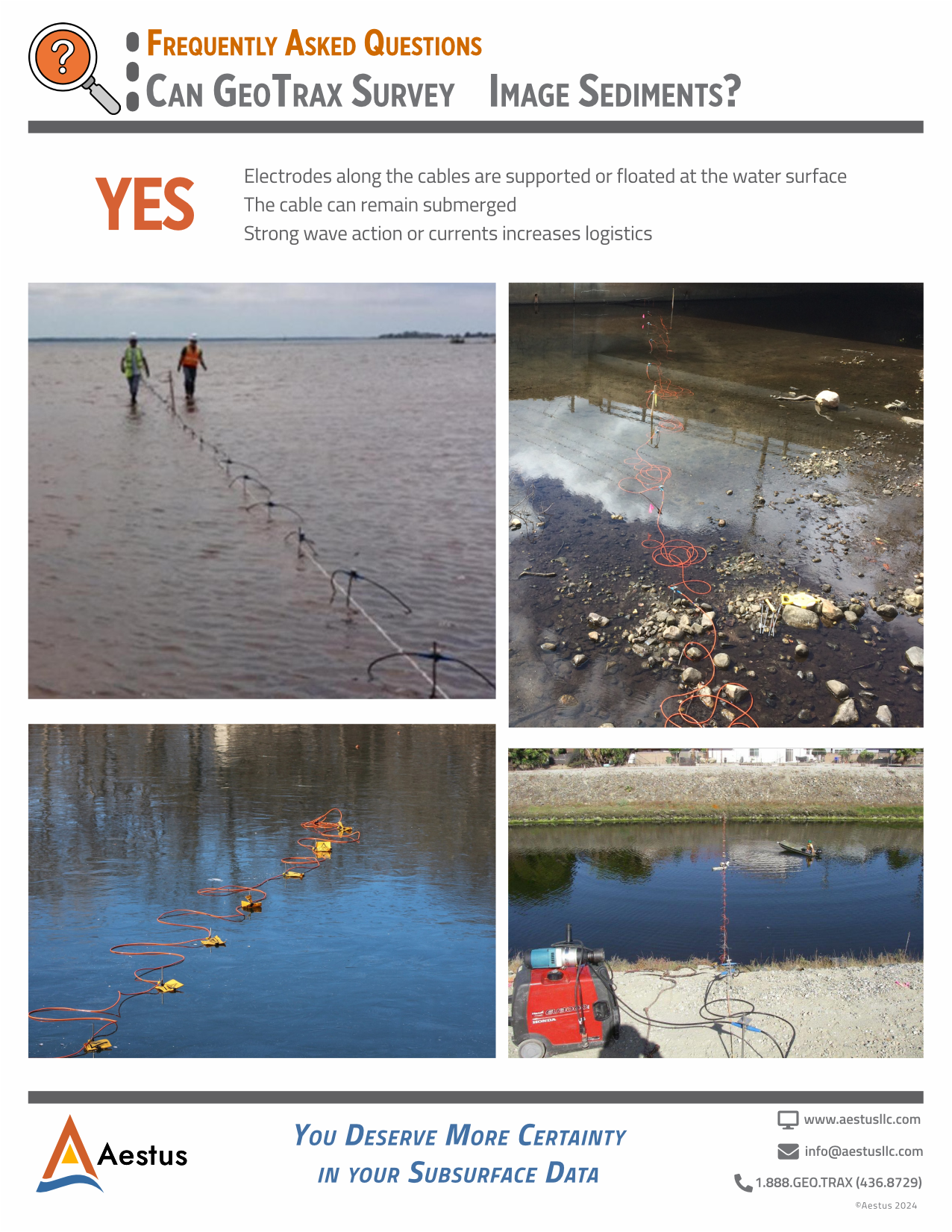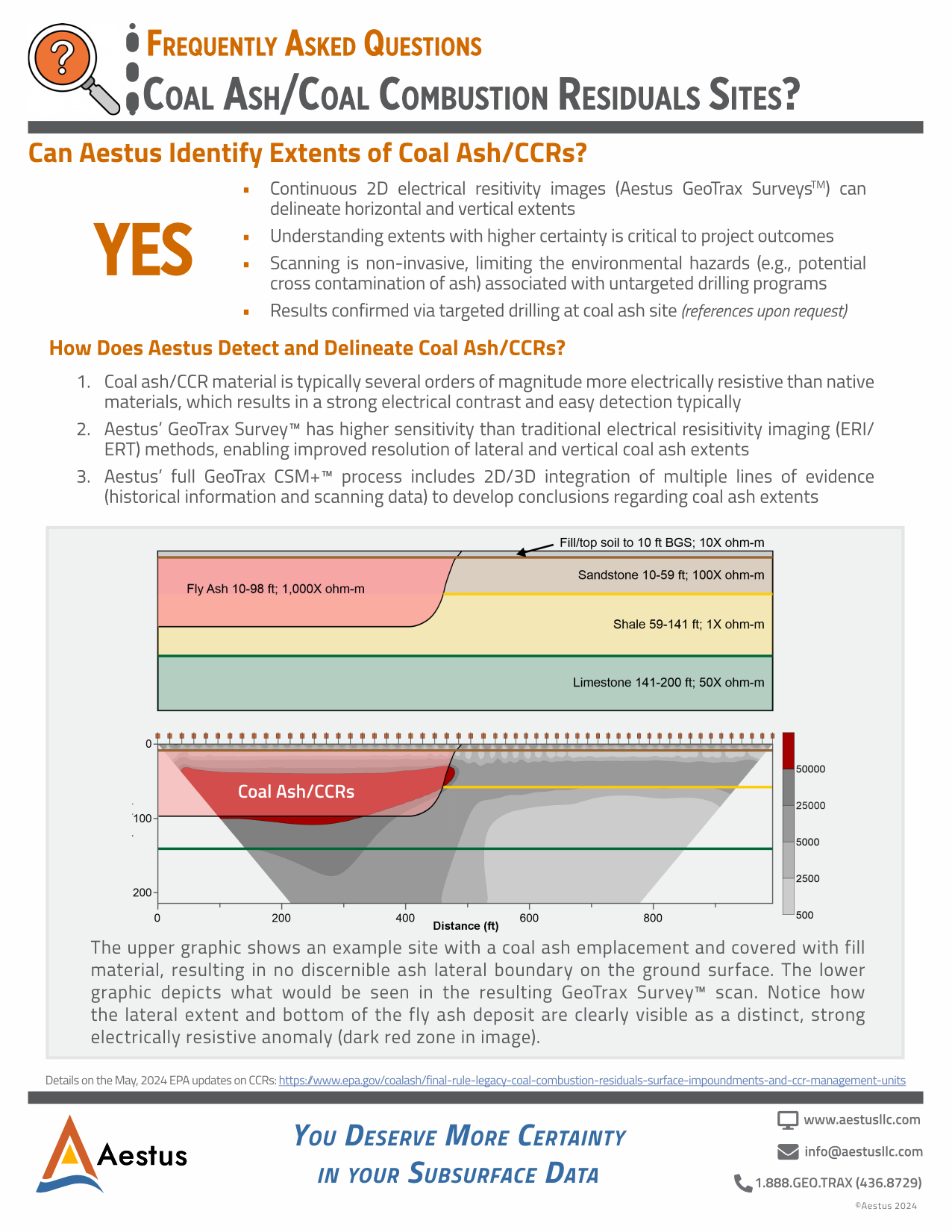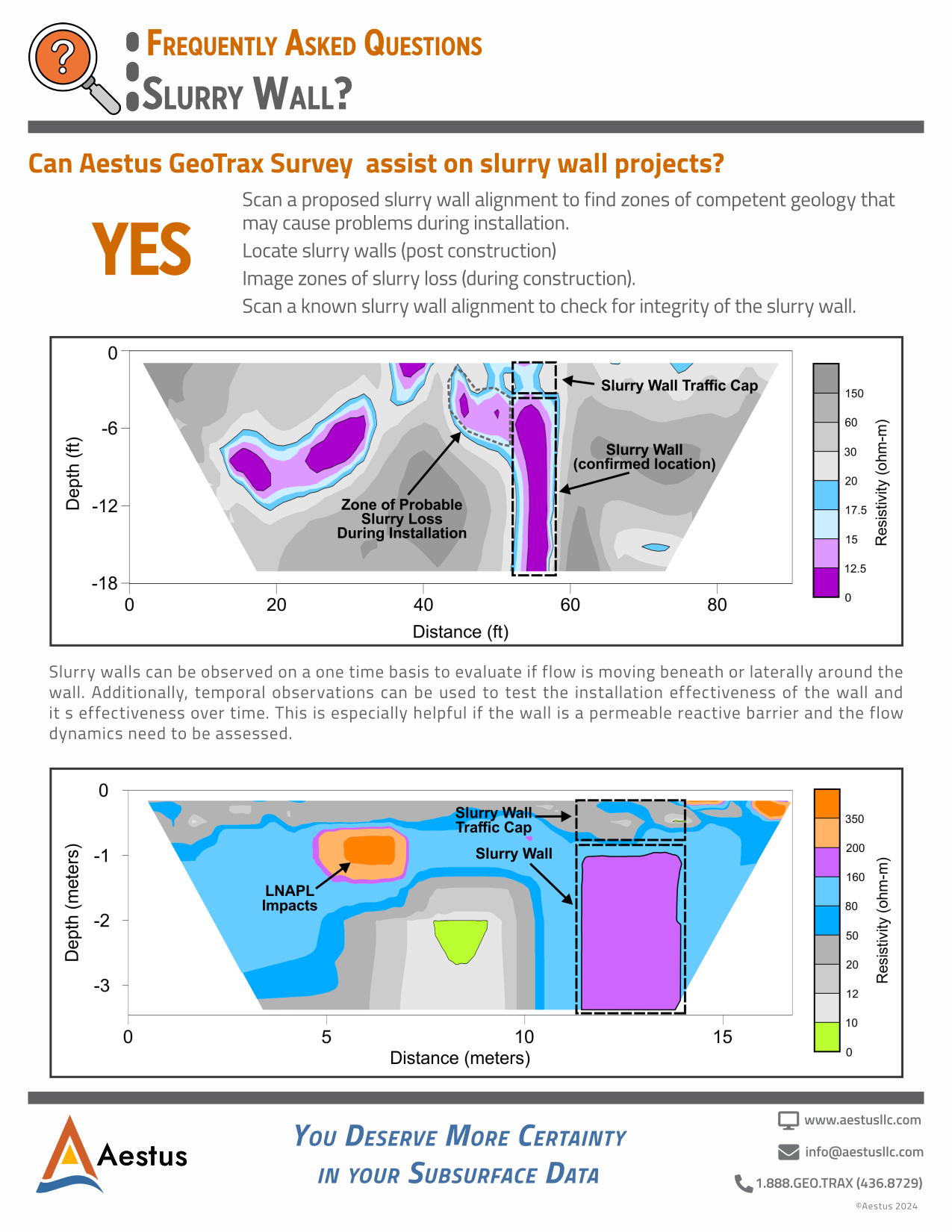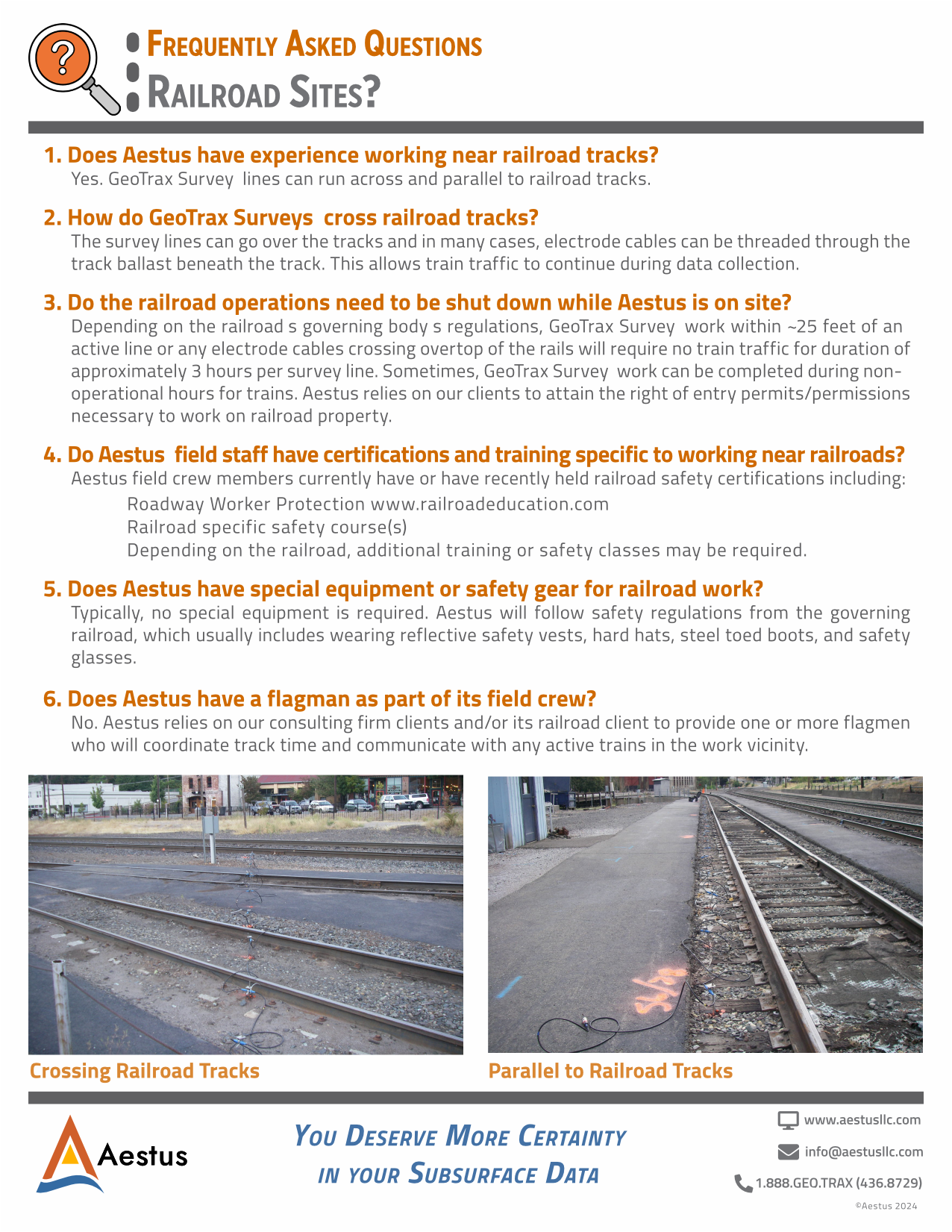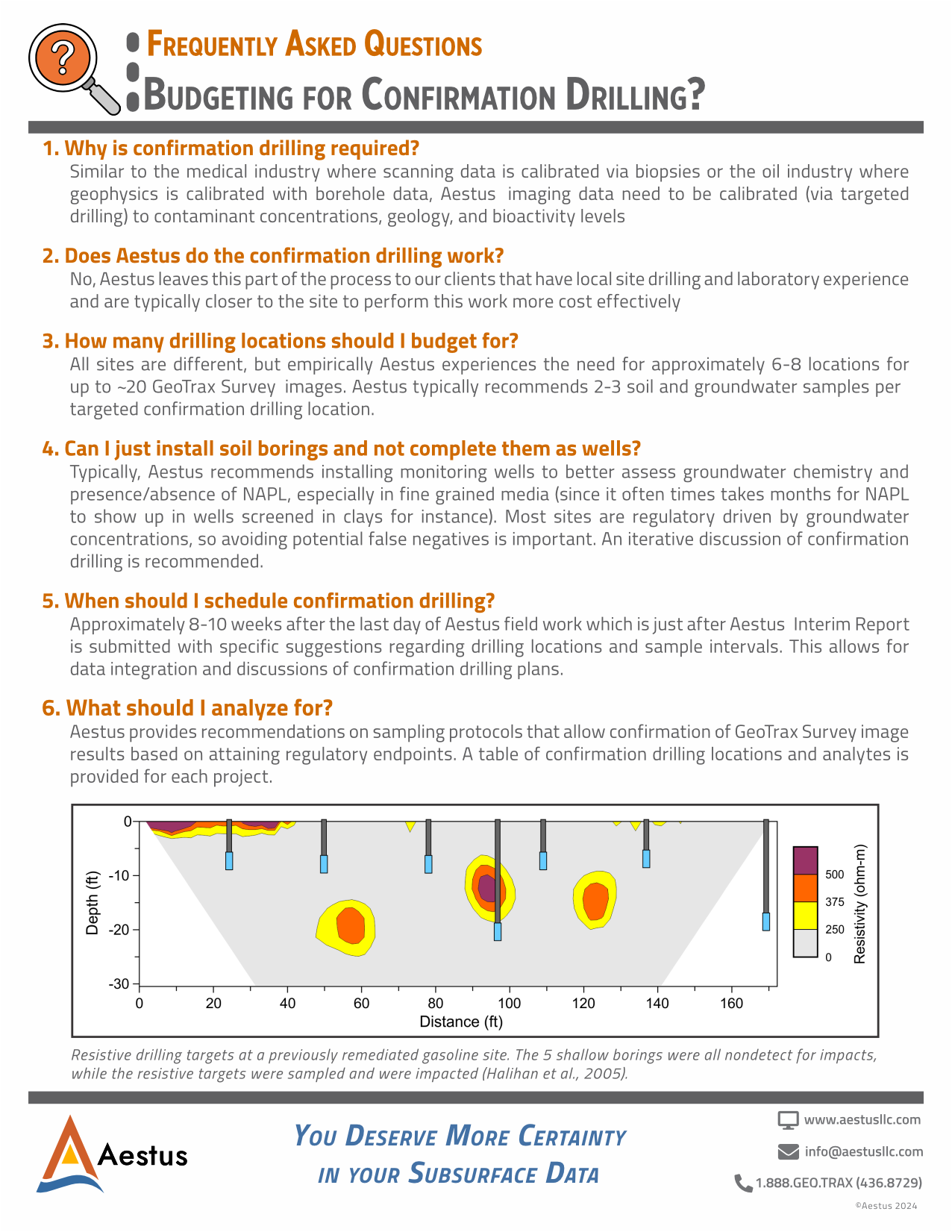Similar to the medical industry where scanning data is calibrated via biopsies, or the oil industry where geophysics is calibrated with borehole data, we need to calibrate our imaging data (via targeted drilling) to contaminant concentrations, geology, and bioactivity levels.
No.
Our clients have local site drilling and laboratory experience and are typically closer to the site to perform confirmation drilling work more cost effectively.
All sites are different, and we can provide an estimate during the proposal process. The goal is to minimize drilling over time by focusing these efforts via targets from our electrical imaging.
Typically, we recommend installing monitoring wells to better assess groundwater chemistry and the presence or absence of non-aqueous phase liquids (NAPL), especially in fine-grained media. For example, it can take months for NAPL to show up in wells screened in clays. Most sites are regulatory driven by groundwater concentrations, so avoiding potential false negatives is important. An iterative discussion of confirmation drilling is recommended.
You should schedule confirmation drilling approximately 12 weeks after the last day of field work, which is just after we deliver your interim report with specific suggestions regarding drilling locations and sample intervals. This allows for data integration and discussions of confirmation drilling plans.
Aestus provides recommendations on sampling protocols that allow confirmation of GeoTrax Survey image results based on attaining regulatory endpoints. We provide a table of confirmation drilling locations and analytes for each project.


